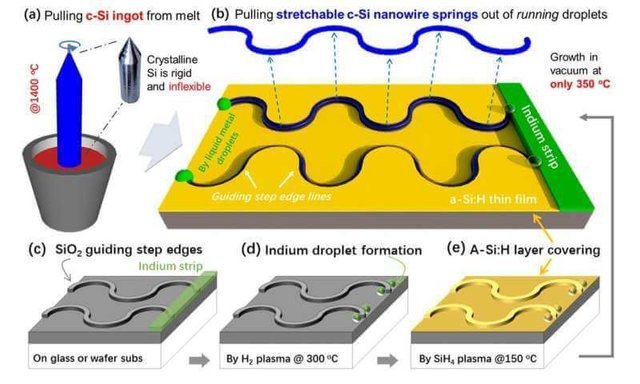Such nanowires can become the basis of semiconductor materials for flexible electronics of the future, which until now has been made of polymers and organic semiconductors, inferior in their semiconductor properties to silicon. In the past, scientists have attempted to create flexible silicon nanowires, but the method of electron-beam lithography that they used is too expensive and impractical for making electronics.

The new method, proposed by the French-Chinese group of scientists, resembles a crystal hood widely used in the silicon industry: a seed crystal is immersed in molten silicon and slowly stretches upward, dragging a long silicon ingot. Only this time the indium particles move along a trajectory covered with amorphous silicon. As a result, crystalline silicon nanowires are obtained.

In the future, scientists plan to investigate the technique of transferring silicon nanowires to a softer substrate, which will bring the practical application of the new technology even closer.
One step closer to getting truly foldable screens and devices.
Downvoting a post can decrease pending rewards and make it less visible. Common reasons:
Submit
Wonderful to read such write up it is really educative,this show that technology is really advancing wish to read more of this from up
Downvoting a post can decrease pending rewards and make it less visible. Common reasons:
Submit